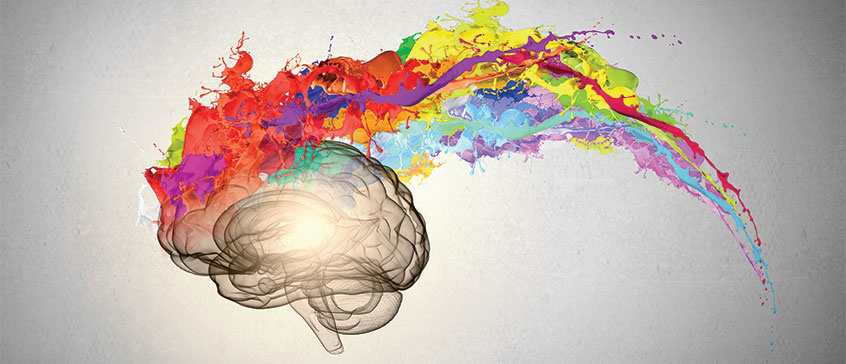The Function of Trump Art in Shaping Cultural Conversations Around Leadership
The Function of Trump Art in Shaping Cultural Conversations Around Leadership
Blog Article
Exploring the Diverse Globe of Artistic Expression: From Surrealism to Abstract Realism
In the realm of imaginative expression, from the dreamlike landscapes of surrealism to the intricate play of light and form in abstract realism, musicians have actually continuously pushed the limits of creative thinking and imagination. As we check out the diverse globe of art, we are offered with a tapestry of styles, methods, and ideologies that test our understanding and provoke reflection.
Surrealism: Letting Loose the Subconscious
Surrealism, a progressive artistic movement of the 20th century, delved into the depths of the subconscious, revealing a globe of dream-like images and unusual associations. Spearheaded by artists like Salvador Dali, René Magritte, and Joan Miró, Surrealism sought to challenge the conventional ways of comprehending and seeing art. With techniques such as automatism and dream analysis, Surrealist artists aimed to use the unconscious mind to reveal hidden truths and desires.
One of the key elements of Surrealism was the emphasis on the irrational and the uncanny. By combining unexpected elements in their jobs, Surrealist musicians intended to produce a sense of disorientation and surprise in the viewer. This disruption of logic and factor was suggested to provoke a much deeper expedition of the subconscious and the enigmas of the human psyche.
Abstract Realism: Redefining Understanding
Challenging typical imaginative borders, Abstract Realism redefines perception via the blend of identifiable aspects with abstract forms. This cutting-edge approach to art incorporates the representational precision of realism with the creative freedom of abstraction, supplying visitors an unique aesthetic experience that motivates them to question their understanding of fact.
In Abstract Realistic look, musicians aim to catch the essence of their topics while also instilling their job with a sense of deepness and complexity via abstract elements. By mixing the accustomed to the strange, these artists welcome audiences to engage with their items on several degrees, encouraging them to discover the nuances of type, shade, and structure.

Cubism: Fragmentising Fact
Utilizing geometric kinds and fragmented viewpoints, Cubism revolutionized the creative representation of truth in the very early 20th century. This approach not only deconstructed reality however likewise highlighted the flatness of the canvas, paving the method for future abstract art activities.

Cubism can be categorized into two major stages: Analytical Cubism, characterized by monochromatic shade plans and complex, fragmented forms; and Synthetic Cubism, which integrated collection elements and brighter colors into the structures. With these distinctive stages, Cubism affected not only paint yet additionally design, architecture, and sculpture. trump art. Its impact reverberated across the art globe, motivating musicians to discover brand-new ways of standing for the globe and interpreting around them
Expressionism: Feelings on Canvas
Discovering the depths of human emotions through expressive and vibrant brushstrokes, Expressionism emerged as an extensive creative movement in the very early 20th century. Unlike previous art movements that concentrated on depicting the exterior world, Expressionism looked into the interior realm of the artist's subconscious, find out here aiming to stimulate raw emotions and provoke natural reactions from visitors.
Expressionist artists, such as Edvard Munch, Egon Schiele, and Emil Nolde, denied conventional ideas of beauty and realistic look in favor of distorting kind and color to communicate subjective sensations. The use of exaggerated brushwork, vibrant colors, and distorted numbers helped create a feeling of worry, alienation, or passion in their works.
Among one of the most well-known instances of Expressionism is Munch's "The Scream," which records the intense stress and anxiety and misery of modern life through its swirling, distorted number versus a blood-red sky. With their mentally billed jobs, Expressionist artists sought to test standard artistic norms and supply a home window right into the turbulent midsts of the human heart.
Contemporary Art: Evolving Perspectives

Among the specifying characteristics of contemporary art is its continuous advancement and ability to adjust to transforming social landscapes. Artists are progressively integrating modern technology into their method, blurring the lines between the electronic and physical worlds. This combination of tools permits cutting-edge ways of storytelling and engaging with target markets in a much more interactive way.
In addition, modern art typically offers as a system for social discourse, attending to pushing problems such as identity, politics, and the atmosphere. Artists are using their job to trigger vital discussions and prompt idea, dropping light on the complexities of the world we stay in. As viewpoints proceed to advance, modern art remains a vibrant and prominent force in forming our social landscape.
Verdict
To conclude, the globe of creative expression includes a vast array of movements and designs, each with its very own distinct approach to sharing significance and emotion. From surrealism's expedition of the subconscious to abstract realism's redefining of perception, and from cubism's fragmentation of fact to expressionism's portrayal of feelings, art remains to evolve and test point of views - trump art. Contemporary art reflects the ever-changing globe we live in, supplying new ways to translate and understand the intricacies of our reality
As we discover the diverse globe of art, we are provided with a tapestry of designs, methods, and approaches that challenge our understanding and provoke reflection. Its effect resounded across the art globe, inspiring musicians to a knockout post explore brand-new means of standing for the world and translating around them.

Report this page